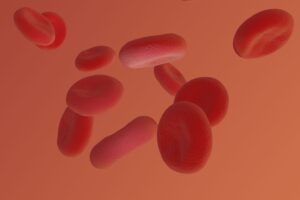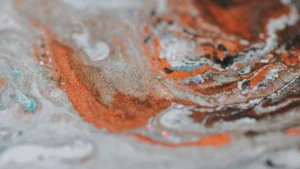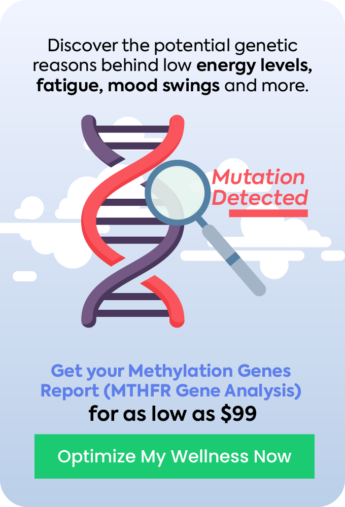Disclaimer: This article is for informational purposes only and is not intended to diagnose any conditions. LifeDNA does not provide diagnostic services for any conditions mentioned in this or any other article.
Bilirubin is a yellow substance produced when your body breaks down old red blood cells. This is a normal process that helps recycle iron and keep your cells healthy. Initially, bilirubin is in an unconjugated form, which means it’s not ready to be removed from the body. It then travels to the liver, where bilirubin is transformed into a form that’s easier for the body to get rid of. This process makes bilirubin conjugated and water-soluble, so it can be expelled through bile and eventually leave the body in stool. A healthy liver handles most of the bilirubin by releasing it into the bloodstream, where it’s carried to the intestines to be excreted.
Understanding bilirubin and regularly monitoring its levels is essential for evaluating liver function and overall health. By keeping track of bilirubin levels, healthcare providers may detect potential issues early on, making sure to take effective treatment.
You may also like: Does Genetics Influence Liver Enzyme Levels?
What Does Bilirubin Level Indicate?
Bilirubin levels in the body provide important insights into overall health and may indicate various underlying health issues. Abnormal bilirubin levels may suggest different health problems, which can be grouped into causes and consequences:
Causes of High Bilirubin Levels:
- Liver Function: Bilirubin is processed in the liver, where it becomes water-soluble and ready for excretion. If the liver is damaged or not functioning properly, bilirubin can accumulate in the blood, leading to elevated levels.
- Hemolytic Anemia: Conditions like hemolytic anemia cause red blood cells to break down faster than normal, resulting in higher levels of unconjugated bilirubin in the blood.
- Bile Duct Obstruction: Blockages in the bile ducts, such as gallstones or tumors, can prevent bilirubin from being excreted, leading to a buildup in the blood.
- Hepatitis: Hepatitis, an inflammation of the liver often caused by a viral infection, hinders the liver’s ability to process bilirubin, resulting in higher blood levels.
- Intrahepatic Cholestasis of Pregnancy: This condition, occurring during the last trimester of pregnancy, slows or stops bile drainage from the liver, impairing bilirubin processing and leading to increased bilirubin levels.
Consequences of High Bilirubin Levels:
- Jaundice: When bilirubin levels become too high, it can lead to jaundice, where the skin and eyes take on a yellowish hue. This condition can occur in both adults and newborns. In newborns, it may cause neonatal jaundice, which often resolves on its own but might require treatment if levels are very high.
- Gallstone Formation: Persistently high levels of bilirubin can contribute to the formation of gallstones, where substances like bilirubin or cholesterol harden in the gallbladder.
What is the Normal Range of Bilirubin?
In adults, typical bilirubin levels range from 0.2 to 1.2 milligrams per deciliter (mg/dL). Levels above 1.2 mg/dL are generally considered elevated and may indicate underlying health issues. For children between the ages of 15 days and 18 years, healthy bilirubin levels should be below 1.0 mg/dL.a=A nomogram can be used to assess the risk of hyperbilirubinemia (high bilirubin levels) in newborns based on their postnatal age in hours. For newborns, the interpretation of bilirubin levels depends on specific conditions and the rate of increase. For example, a bilirubin level of 8 mg/dL on the second day of life might not be alarming on its own. However, if the level was 3 mg/dL on the first day, a rapid increase to 9 mg/dL could signal the need for closer monitoring and possible intervention.
Genetic Factors Influencing Bilirubin Levels
Bilirubin levels in the blood can significantly vary due to various factors, including genetics. Multiple studies (Telega, 2018; Grossman, 2011; Chowdhury, 2012) have identified a gene linked to Gilbert’s Syndrome (GS), which is inherited within families, and causes high blood bilirubin levels. Gilbert’s Syndrome is a common and harmless genetic condition that affects up to 8% of the population. It is inherited in an autosomal dominant manner, meaning that if one parent possesses the gene mutation, their children have a possibility of inheriting it as well. The condition is more frequently seen in boys than girls and typically appears in older children or teenagers.
GS is caused by a mutation in the UGT1A1 gene. This gene helps produce an enzyme needed to convert bilirubin, a substance made by the liver, into a form that can be easily removed from the body. In people with GS, this enzyme doesn’t work as well, leading to higher levels of bilirubin in the blood.
Despite the biochemical changes, around one-third of individuals with GS show no symptoms, and the condition is often discovered accidentally during blood tests conducted for other reasons. When symptoms do occur, they typically involve mild, persistent, or occasional yellowing of the skin and eyes (jaundice), especially during periods of stress, illness, fasting, or alcohol consumption.
Doctors diagnose GS by noting mild increases in bilirubin levels without signs of liver damage or red blood cell breakdown. Blood tests usually show normal liver function. The diagnosis can be confirmed if bilirubin levels increase significantly after a 24-hour fast. Genetic testing can also identify the specific UGT1A1 gene mutation responsible for the condition.
Interestingly, GS might have some health benefits. Research by Kundur et al. (2015) has shown that people with GS have higher levels of antioxidants in their blood, including bilirubin and glutathione. These antioxidants defend the body against damage caused by harmful molecules related to oxidative stress.
The study suggests that individuals with GS have a decreased risk of heart disease and associated deaths. This protection might be due to elevated bilirubin reducing the activity of platelets, the small blood cells that form clots. Oxidative stress can enhance platelet activity, which raises the risk of blood clots and heart attacks. By acting as a natural anti-clotting agent, bilirubin may lower the risk of heart attacks and explain why people with GS have lower heart disease mortality.
Some FAQs on Bilirubin
What is a Bilirubin test?
A bilirubin test checks the amount of bilirubin in your blood to help doctors evaluate your liver performance. It is commonly included in a group of tests that assess liver health. Normally, a healthy liver processes and removes bilirubin efficiently. However, if you have liver problems, bilirubin can accumulate to unhealthy levels in your body, indicating potential liver disease.
Why do I need a bilirubin blood test?
Doctors frequently request a bilirubin blood test to diagnose and monitor different health conditions.
You might require this test if you have symptoms like yellowing of the skin or eyes, dark-colored urine, or stomach pain, as these could be signs of liver issues such as hepatitis, cirrhosis, or gallbladder problems.
The test can also help determine if there’s a blockage in the bile ducts. For individuals with existing liver diseases or disorders, a bilirubin test is essential for monitoring the condition and assessing liver function. In some cases, concerns related to the breakdown of red blood cells, such as in cases of hemolytic anemia, occur.
Why do many newborns develop jaundice, and how is it treated?
Many newborns develop jaundice a few days after birth due to high bilirubin levels. This happens because newborns have more red blood cells that break down quickly, but their livers are not yet fully developed to process bilirubin efficiently. Before birth, the pregnant person’s liver helps manage bilirubin. A newborn’s liver is only about 1% as active as an adult’s liver.
In most newborns, jaundice appears within 1 to 3 days after birth, with bilirubin levels peaking around the fourth or fifth day. These levels can reach up to 18 mg/dL. Typically, the jaundice resolves within 2 weeks as the baby’s liver matures and becomes better at processing bilirubin.
To help reduce bilirubin levels, feeding the baby 8 to 12 times per day promotes regular bowel movements, which aids in removing bilirubin from the body. In most cases, this condition is temporary and clears up on its own. However, if jaundice persists or bilirubin levels become very high, medical treatments such as phototherapy, intravenous immunoglobulin, or exchange transfusion may be necessary.
What are the symptoms of high bilirubin?
The symptoms of high bilirubin can vary depending on the underlying cause. Some people with mildly elevated bilirubin levels may not experience any symptoms at all.
For those with moderately high bilirubin, the primary symptom is often jaundice, which is characterized by a yellowish color in the eyes and skin. Jaundice is the most common and noticeable sign of elevated bilirubin levels.
Other general symptoms that might accompany conditions causing high bilirubin include:
- Abdominal pain or swelling: Liver or gallbladder disorders that increase bilirubin levels can cause abdominal pain or swelling due to inflammation, obstruction, or damage to these organs.
- Chills: Chills can occur with infections or inflammation of the liver (like hepatitis), which can also raise bilirubin levels.
- Fever: Fever may indicate an underlying infection or inflammatory condition affecting the liver, such as hepatitis or a bile duct infection, which can also lead to elevated bilirubin.
- Chest pain: Though less directly related, severe liver disease or complications can cause chest pain, possibly due to referred pain or related cardiovascular stress.
- Fatigue: High bilirubin can be a sign of liver dysfunction, leading to fatigue and weakness due to the liver’s role in energy metabolism.
- Lightheadedness: Severe liver diseases causing high bilirubin can disrupt normal metabolic processes, leading to symptoms like lightheadedness due to reduced blood flow or oxygen levels.
- Nausea: High bilirubin can result from liver or gallbladder disease, which can also cause digestive disturbances like nausea.
- Unusually dark urine: High bilirubin levels in the blood can lead to its excretion in the urine, causing a darker color. This is particularly associated with direct (conjugated) bilirubin which is water-soluble.
Tips to Naturally Lower Bilirubin Levels
To naturally lower your bilirubin levels and support overall liver health, consider implementing the following lifestyle and dietary changes:
Eat a Balanced Diet: A diet rich in fruits, vegetables, and whole grains provides essential nutrients that support liver health. Vitamins, minerals, and antioxidants support liver function, which helps in a more efficient processing and elimination of bilirubin.
Stay Hydrated: Drink lots of water to maintain general liver health. It helps in the elimination of toxins from the body, including excess bilirubin.
Fiber-Rich Food: Food items with high fiber like oats, beans, and whole grains may help with digestion. Improved digestion can help the body remove excess bilirubin through regular bowel movements.
Control Alcohol Consumption: Drinking too much alcohol may harm the liver’s ability to process and eliminate bilirubin.
Refrain from Consuming Processed and High-Fat Foods: Consuming certain food itemsfood like these can increase the risk of liver inflammation and fatty liver disease. Avoiding fried foods, junk food, and processed snacks can help prevent liver damage and support healthy bilirubin levels.
Regular Exercise: Exercise regularly because it enhances blood circulation, helps to lose weight, and improves overall liver function. Physical activity reduces fat buildup in the liver and promotes better metabolic health, which can assist in lowering bilirubin levels.
Maintain a Healthy Weight: Maintain a healthy body weight to prevent liver problems. A healthy liver is more efficient at processing and eliminating bilirubin, which helps keep its levels in the normal range.
Avoid Excessive Use of Over-the-Counter Medications: Over-the-counter pain relievers, especially those containing acetaminophen, can strain the liver when used excessively. Managing medication use and consulting with a healthcare professional can help avoid liver complications.
Manage Stress: Chronic stress can impact liver function and overall health. Incorporate stress management techniques such as meditation, deep breathing exercises, and relaxation techniques to support liver health.
Limit Exposure to Toxins: Minimize exposure to environmental toxins and chemicals that can stress the liver. This includes avoiding cigarette smoke, limiting exposure to industrial chemicals, and using natural cleaning products.
References
- https://medlineplus.gov/lab-tests/bilirubin-blood-test/
- https://www.urmc.rochester.edu/encyclopedia/content.aspx?contenttypeid=167&contentid=total_bilirubin_blood
- https://www.medicalnewstoday.com/articles/315086#in-newborns
- https://www.bioma.me/bioma-health/biomarkers/the-role-of-bilirubin-in-the-body
- https://www.healthline.com/health/high-bilirubin#bilirubin-levels
- https://www.sciencedirect.com/topics/nursing-and-health-professions/gilbert-disease#:~:text=A%20presumptive%20diagnosis%20of%20Gilbert,postprandial%20bile%20acids%20are%20normal.
- https://gracelaboratory.com/how-to-reduce-direct-bilirubin/
- https://www.sciencedirect.com/science/article/abs/pii/S0021915014016645










